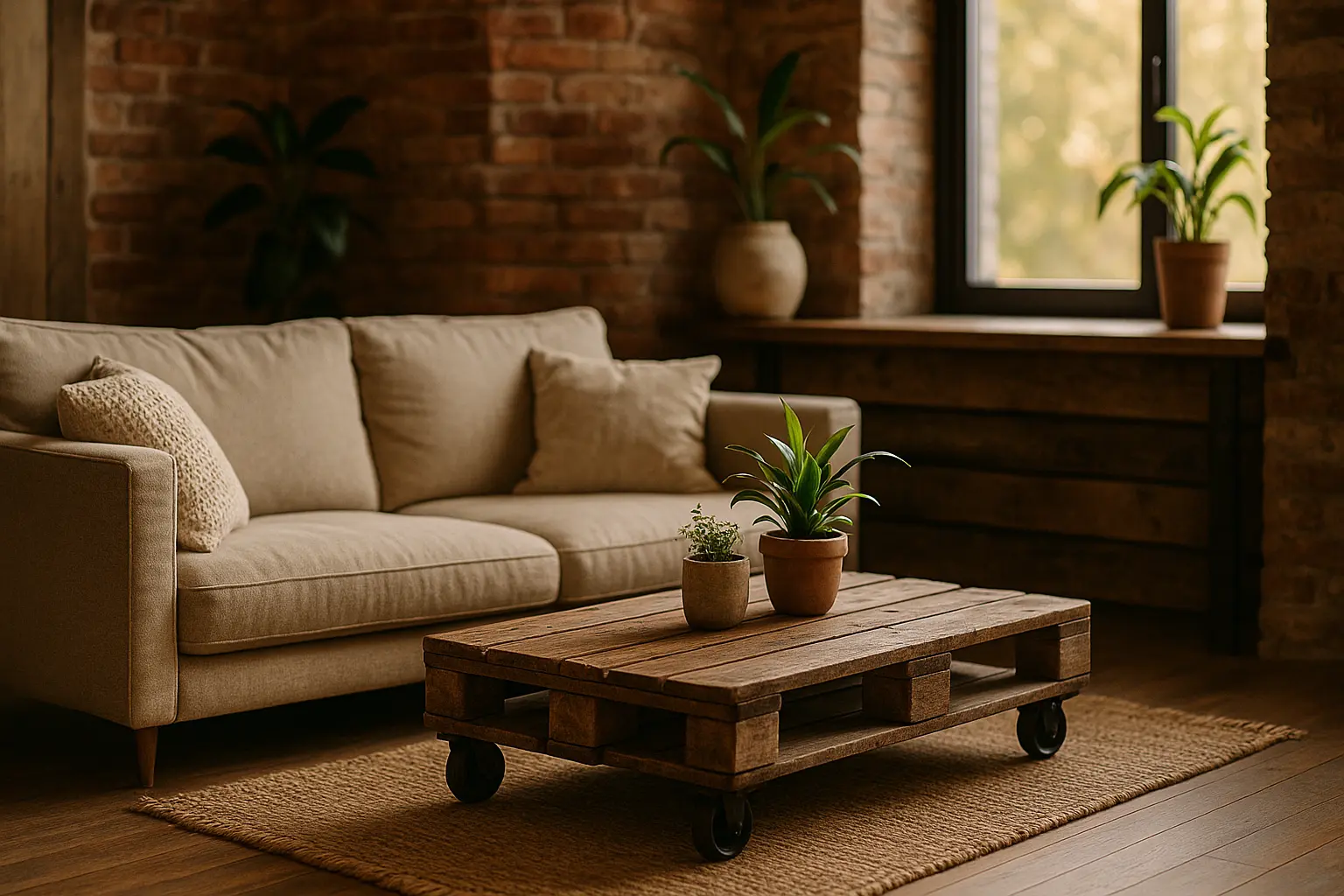In an age where interior design continuously evolves, embracing raw materials has become a defining trend. These materials can transform a room, infusing it with texture, style, and authenticity. However, even with the best intentions, we often stumble upon common mistakes that can undermine our efforts to create a harmonious space. As we journey through this decor landscape, we’ll share strategies to avoid these pitfalls and craft interiors that feel both inviting and innovative.
The Trouble with Too Much Texture
When embracing raw materials, the temptation to go all-in can be alluring. However, striking a balance is essential, as excessive texture can lead to visual clutter rather than achieving that seamless, natural vibe we all crave.
Finding Balance with Texture Raw materials—be it wood, stone, or metal—bring a unique character to a room. Yet, using them in tandem can overwhelm the senses. Mixing too many textures may clash, detracting from the overall aesthetic.
To avoid this mistake, focus on a cohesive palette. Choose materials that complement one another, integrating them thoughtfully into the design. For instance, a wood-paneled wall can be beautifully offset by sleek metal fixtures. This not only maintains a cohesive style but also leaves room for other elements to shine.
Playing with Proportions Proportions play a crucial role in determining how a space feels. A room dominated by heavy textures might feel constricted.
Use a blend of textures in moderation. Lighter textures add openness, helping balance heavier elements like wooden beams or stone floors. Incorporating soft textiles in cushions or curtains can also add warmth and softness without compromising the raw appeal.
In summary, while raw materials offer an abundance of design opportunities, mastering the art of balance ensures the space remains inviting rather than overwhelming.
The Color Conundrum
Color acts as the foundation of any interior design project. When working with raw materials, the choice of colors can make or break the overall vibe. Missteps in color selection can inadvertently mute your design intentions.
Complementing Raw with the Right Hues While raw materials boast their own natural hues, it’s crucial to enhance rather than overshadow them. Choosing colors that clash with these materials is a frequent mistake. A bright, vivid color might overpower a beautifully structured stone wall.
Instead, opt for a palette that highlights the raw elegance. Earthy tones often pair harmoniously with most raw materials. Think deep greens to complement natural stone, or soft grays to enhance the warmth of wood. This strategy not only elevates the material’s innate beauty but also adds depth to the room.
Using Color to Define Space Color also plays a pivotal role in defining and differentiating spaces. When faced with open-plan interiors, use color to delineate one area from another without erecting physical barriers. For example, a warm-toned area rug can create an inviting dining space within a larger living area.
Ultimately, understanding the relationship between color and raw materials ensures that each element in the space sings in harmony, rather than battling for attention.
Lighting: The Overlooked Element
An often-ignored aspect of decorating with raw materials is the lighting. Natural light can dance across surfaces, highlighting textures and enhancing the feel of the room. Yet, the artificial lighting we choose can either celebrate or conceal the uniqueness of these materials.
Illuminating with Intent Proper lighting doesn’t only illuminate a space; it sets the mood. A common mistake lies in neglecting the way light interacts with raw materials. For example, an overly bright LED might wash out the subtle grains of reclaimed wood.
Consider the type and placement of lights. Warmer bulbs can accentuate the organic tones of wood, while directed spotlights can highlight a stunning feature wall. Layering lighting—combining ambient, task, and accent lighting—can add dimension and depth to any room.
Natural Light as a Design Element Maximizing natural light is paramount when working with raw materials. Large windows or strategically placed mirrors can flood a room with sunlight, bringing out the best in your materials. However, balance is key. Too much direct sunlight might fade natural textiles or create a glare.
By prioritizing the interaction between light and raw materials, we ensure every corner of a room is showcased in its best light, both literally and figuratively.
As we’ve navigated through the realm of interior design with raw materials, the journey highlights the importance of a thoughtful approach. Whether it’s balancing texture, choosing the right colors, or optimizing lighting, each decision impacts the overall ambiance. Our homes are reflections of our personalities. By avoiding these mistakes, we can create spaces that not only look stunning but also feel like a personal sanctuary. Let’s embrace the elegance of raw materials, crafting interiors that stand the test of time, and speak to our individual styles.
FAQ
What are some common mistakes to avoid when using raw materials in home decor?
Overlooking the balance between raw materials and other design elements can lead to a cluttered or unfinished appearance. It’s essential to use raw materials like wood, stone, or metal in moderation, ensuring they complement rather than overshadow other aspects of the decor.
How can one prevent a space from feeling too cold or industrial with raw materials?
Incorporate warm elements such as textiles, plants, or soft lighting to balance the cool, industrial feel of raw materials. This creates a welcoming and cozy atmosphere while still highlighting the beauty of natural textures.
What should be considered when mixing different raw materials in a single space?
Ensure a cohesive color palette and texture theme when combining raw materials. Striking a balance between contrast and harmony is key to creating an aesthetically pleasing and unified look.
Are there any pitfalls to avoid when integrating raw materials into a modern decor style?
Avoid overusing raw materials to the point where they overshadow the modern design elements. Instead, use them as accents or focal points to enhance the modern aesthetic without compromising its sleekness.
How can one maintain the natural beauty of raw materials in decor over time?
Regular cleaning and appropriate maintenance, such as sealing wood or protecting metals from rust, are essential for preserving the natural beauty and longevity of raw materials in decor.



